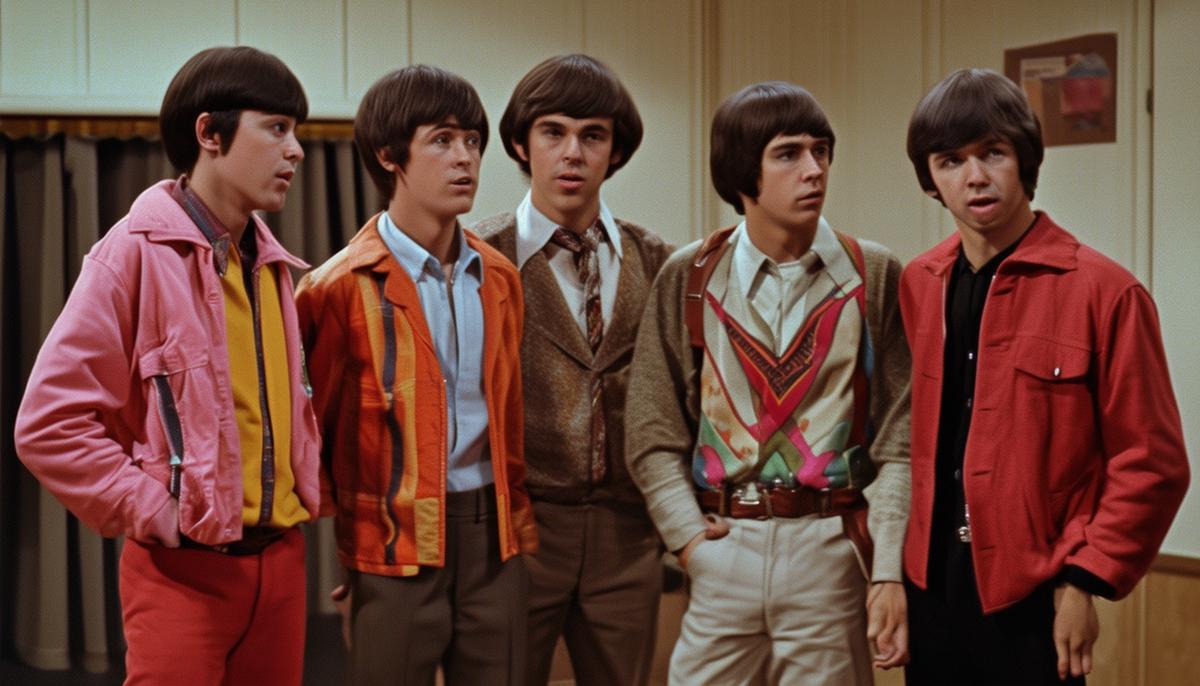Creation and Concept
The Monkees TV show hit screens on September 12, 1966. Producers Bob Rafelson and Bert Schneider dreamed it up, inspired by The Beatles' A Hard Day's Night. They wanted a show about a made-up band, mixing funny antics with catchy tunes.
It started with a quirky ad in Daily Variety and The Hollywood Reporter in 1965, calling for "insane boys" aged 17 to 21 with musical skills. A whopping 437 hopefuls applied.
The producers picked distinct personalities for their quartet:
- Michael Nesmith brought his iconic wool hat
- Peter Tork joined after a tip from Stephen Stills
- Davy Jones added showbiz flair
- Micky Dolenz brought charisma
They hadn't met before filming but clicked unexpectedly.
The pilot wowed test audiences, and NBC greenlit the show in early 1966. But they still needed to become a real band. Dolenz learned drums from scratch, and Nesmith started writing songs. With time running out, Don Kirshner brought in top musicians to help shape their sound.
That autumn, The Monkees debuted with Dolenz belting out "Last Train to Clarksville." From auditions to musical marvel, The Monkees' creation was something special.

Impact and Success
The Monkees debut was a hit, winning over American audiences with its wild energy. The show stood out with its mix of slapstick humor, snappy dialogue, and catchy rock tunes. It often broke the fourth wall, having characters talk directly to viewers.
The show's success went beyond laughs. It won two Emmy Awards in 1967, including Outstanding Comedy Series. More importantly, it turned the Monkees from TV characters into real rock stars. This was new territory, blending TV and music in a fresh way.
"We were like a cover band for our own music." – Peter Tork
In 1967, The Monkees outsold both The Beatles and The Rolling Stones combined. Their catchy tunes and fun style connected with fans looking for a new kind of star. Despite critics questioning their TV origins, The Monkees used their fame to explore their creativity.
From TV beginnings, they became music industry trailblazers. This journey from fictional band to chart-toppers showed the power of media innovation and redefined what it meant to rock in the 60s.
Music and Legacy
The Monkees' musical journey was a chart-topping ride that left its mark on pop culture. Hits like "I'm a Believer" and "Daydream Believer" dominated the airwaves. From 1966 to 1968, they scored 9 Top 40 singles, including three number ones. Their albums flew off the shelves, connecting with fans who loved their pop-rock sound.
The Monkees showed how TV and music could work together, creating a new kind of fame. They became icons of 60s culture, bringing youthful energy to the music scene. Their songs became the soundtrack for a generation ready for fun and creativity.
Even after their show ended, The Monkees' influence continued. Reunion tours and new fans kept their music alive. They proved that unexpected beginnings can lead to lasting success in the world of rock 'n' roll.
| Year | Achievement |
|---|---|
| 1966 | TV show debut |
| 1967 | Two Emmy Awards |
| 1967 | Outsold Beatles and Rolling Stones |
| 1966-1968 | 9 Top 40 singles |
The Monkees' story shows how creativity can lead to big things. They went from a TV idea to real music stars, leaving their mark on both tunes and culture.
-
1. Shearer L. The Monkees: Why the Teenagers Like Them. Boston Globe. December 1966.
2. Goostree L. The Monkees and the Deconstruction of Television Realism. Journal of Popular Film and Television. 1988.
3. Watts P. Do I have to do this all over again? Uncut. 2016.
4. The Monkees: The Day-By-Day Story of the '60s TV Pop Sensation. Rovin J. 1977.
